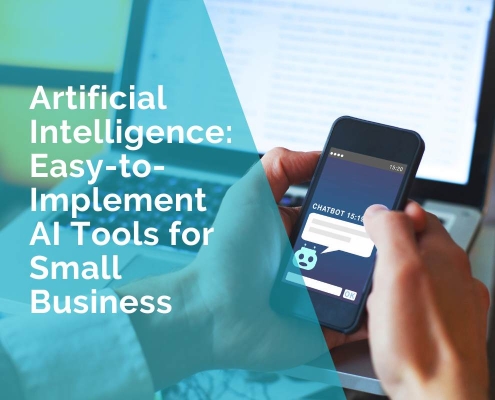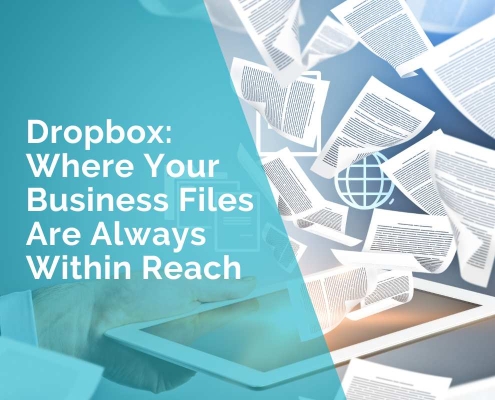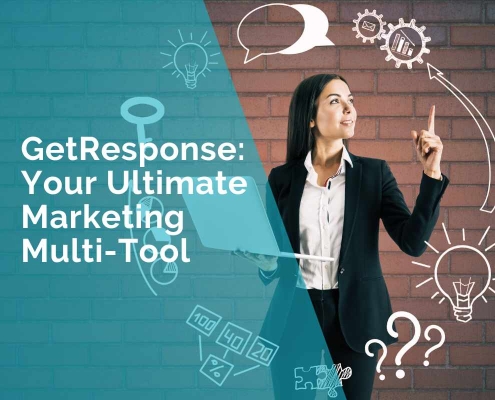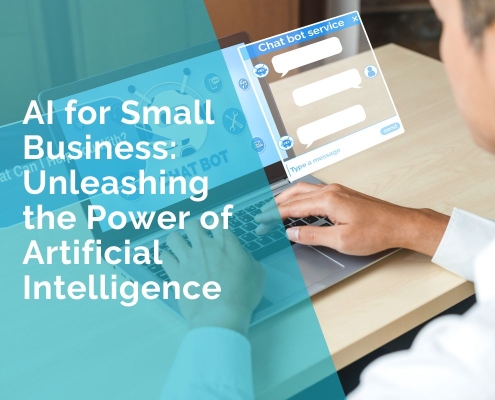How AI Engineers Leverage Instagram Data to Build Smarter Models for Small Businesses
Small businesses are turning to artificial intelligence (AI) to better understand their audiences, automate marketing, and deliver more personalised experiences. But great AI starts with great data — and that’s where many business owners and developers hit a wall. Public APIs often lack the depth and context needed for real-world learning. That’s why many professionals turn to tools like the https://data365.co/instagram-private-api, which offer broader access to public social content and engagement signals that help power smarter, more adaptive AI systems.
Why Public APIs Limit Small Business Innovation
Most official APIs are built for safety and standardisation — not for machine learning. They provide sanitised, aggregated data that’s useful for analytics dashboards but fall short when it comes to training models that interact with real people in dynamic, conversational ways.
If you’re trying to build an AI tool that can:
- Understand informal customer comments on your posts
- Recommend products based on visual content
- Analyse social sentiment about your brand
- Recognise trends in user engagement
Then you need more than just a few pre-approved metrics. You need access to unstructured data — the real captions, hashtags, images, and interactions that reflect how people engage with your brand online.
The Role of Instagram Data in AI-Powered Small Business Tools
Instagram, with its billions of posts, comments, and stories, represents a living archive of human behaviour. And unlike static datasets, it updates every second — offering fresh training data for models built around real-time applications.
By responsibly accessing public Instagram data through enhanced APIs, developers and small business owners can unlock insights that directly feed into business growth. Here are a few examples:
1. Sentiment Analysis for Social Listening
Understanding how your audience feels about your products or services is critical. Traditional review platforms often reflect only polarised views — extremely good or bad. Instagram comments, on the other hand, are casual, honest, and spontaneous.
By analysing this kind of text — including emojis, slang, multilingual expressions, and hashtags — AI tools can detect nuanced sentiment in a way that traditional survey data never could. For small businesses, this means knowing:
- Which product drops sparked excitement
- How customer tone shifts across campaigns
- Which posts generate the most positive engagement
This empowers more responsive marketing strategies and better customer experience.
2. Visual Content Recognition and Trend Spotting
If your brand lives in the fashion, fitness, food, or lifestyle space, visual content is king. But understanding what’s in a photo — and how people are reacting to it — requires more than just likes.
Using image URLs, captions, and hashtag metadata from public Instagram posts, AI tools can be trained to:
- Identify product types or features (e.g. “red dress” or “vegan burger”)
- Track the rise of new trends or seasonal styles
- Recognise brand logos and estimate their social visibility
For a small online retailer, this could mean automatically tagging inventory, predicting which products will sell out next season, or even benchmarking your brand’s visibility against competitors.
3. Language Models Trained on Authentic User Content
Language models like ChatGPT and custom AI assistants work best when trained on natural human input. Instagram provides a constant stream of short-form, informal, and multilingual content — perfect for models that need to understand:
- Internet slang and abbreviations
- Emoji combinations with emotional context
- Localised speech patterns or community dialects
- Topic-specific jargon (e.g. fitness terms or beauty lingo)
This is particularly helpful when building AI-powered chatbots, customer service assistants, or personalised shopping tools tailored to niche audiences. For small businesses, it offers a way to speak your customers’ language — literally.
Actionable Steps for Small Businesses
Step 1: Define Your AI Objective
Not all AI is the same. Decide what you want to achieve. Common goals include:
- Automating responses to social media messages
- Understanding brand perception via sentiment tracking
- Generating trend reports or content calendars
- Improving ad targeting or product recommendations
Step 2: Identify Data Sources
Instagram is a valuable data source, especially when accessed through tools like the Instagram Private API, which provides broader access to:
- Post captions and comments
- Engagement metrics
- High-quality public images and videos
- Hashtags and mentions
- Public profile metrics like follower counts
Make sure your use case is based on public content and aligns with ethical data usage standards.
Step 3: Choose the Right Tech Stack
Depending on your goal, your toolset might include:
- NLP frameworks like spaCy, Hugging Face Transformers, or OpenAI APIs
- Computer vision libraries such as TensorFlow or PyTorch
- Social media API integration tools like Postman or custom Python scripts
- Data storage platforms (e.g., AWS S3, MongoDB)
If you’re not technical, partner with a freelance developer or small AI agency that understands ethical data usage and platform limitations.
Step 4: Train Your Model on Instagram Data
Once you’ve pulled data via the API, you’ll want to clean and label it. For instance:
- Group captions and comments by sentiment
- Use hashtags to classify product categories
- Tag images with objects or themes (e.g., “fitness,” “outdoors,” “cozy fashion”)
This process helps your AI understand not just words or pictures — but the context behind them.
Step 5: Monitor, Improve, and Stay Compliant
After deployment, keep your system updated:
- Monitor real-time trends and retrain regularly
- Stay informed about changes to platform policies
- Log all data use and obtain consent where applicable
- Never collect or process private or sensitive user data
Tools like the Instagram Private API often come with documentation and compliance guidelines — use them wisely to build trust with your users.
Ethics, Compliance, and Best Practices
Using public data responsibly is non-negotiable. Even if content is visible to everyone, AI usage introduces new layers of responsibility. Here’s how to do it right:
- Avoid intrusive automation: Don’t auto-like, auto-follow, or DM users.
- Anonymise data: Strip out usernames and personal identifiers.
- Protect stored data: Use encryption and access control.
- Be transparent: Let users know when AI is involved.
Future-Proofing AI for Your Brand
Small businesses have a unique advantage: agility. While large enterprises struggle with bureaucracy, you can experiment with AI, tweak strategies quickly, and pivot based on real insights from your social community.
By leveraging real-time public data from Instagram — through ethical, structured access points — you can:
- Build smarter recommendation engines
- Detect shifting customer preferences early
- Automate your social media strategy with intelligence
- Understand the visual and linguistic culture around your niche
The goal isn’t just automation. It’s personalisation. Connection. Relevance.
AI is no longer a luxury for small businesses — it’s a competitive advantage. But to build AI that works in the real world, you need data that reflects the real world. Instagram, as a dynamic platform filled with visual and textual interactions, offers that data — if accessed responsibly and with the right tools.
Real-World Use Cases: How Small Businesses Are Already Benefiting
Boutique Fashion Brands
Independent fashion labels often struggle to keep up with fast-moving trends. By analysing public Instagram data, including outfit photos, hashtags like #streetstyle or #OOTD, and user engagement, small brands are building AI tools that help:
- Forecast upcoming fashion trends based on seasonal photo patterns
- Auto-tag products with trending styles or colours
- Suggest outfit combinations based on real-world examples
Health & Wellness Coaches
Personal trainers and wellness coaches use Instagram to share progress photos, motivational quotes, and nutrition tips. But with the help of AI models trained on this content, they can now:
- Identify what type of content motivates followers most
- Group users by interests (e.g., weight loss, muscle gain, flexibility)
- Automatically generate post captions in an engaging tone
- Monitor shifts in audience sentiment before launching new programs
Local Restaurants and Cafes
Some local restaurants are now using AI-driven tools to:
- Spot viral food trends
- Generate menu suggestions based on popular dishes
- Optimise photo angles and lighting for best performance
- Track competitor engagement to refine their own strategy
Building Smarter Campaigns with Multimodal AI
Multimodal learning combines image and text data into a single model that can “see” and “read” at the same time. For example, a small online jewellery shop might use it to:
- Identify the best-performing image-caption combos
- Train a visual-text recommendation engine
- Offer visual search on their website: “upload a photo, find similar earrings”
Getting Started: Your AI-Ready Social Media Strategy
- Label your social posts by campaign, product, or season
- Encourage engagement — comments, shares, and saves
- Maintain visual and messaging consistency
- Experiment with low-code platforms like RunwayML or Levity
Data Is the Fuel, but Strategy Is the Engine
Artificial intelligence offers powerful ways to grow and streamline a small business — but only when fuelled with real, high-quality data. Instagram provides a rich stream of public content perfect for training models that “think” like your customers.
By responsibly accessing this data using ethical, structured tools like the Instagram Private API, and combining it with clear business objectives, even small teams can build smart, adaptive systems that rival enterprise solutions.
The future of small business AI doesn’t belong to those with the biggest budgets. It belongs to those with the best data — and the boldness to use it wisely.
***************
Felix Morales












